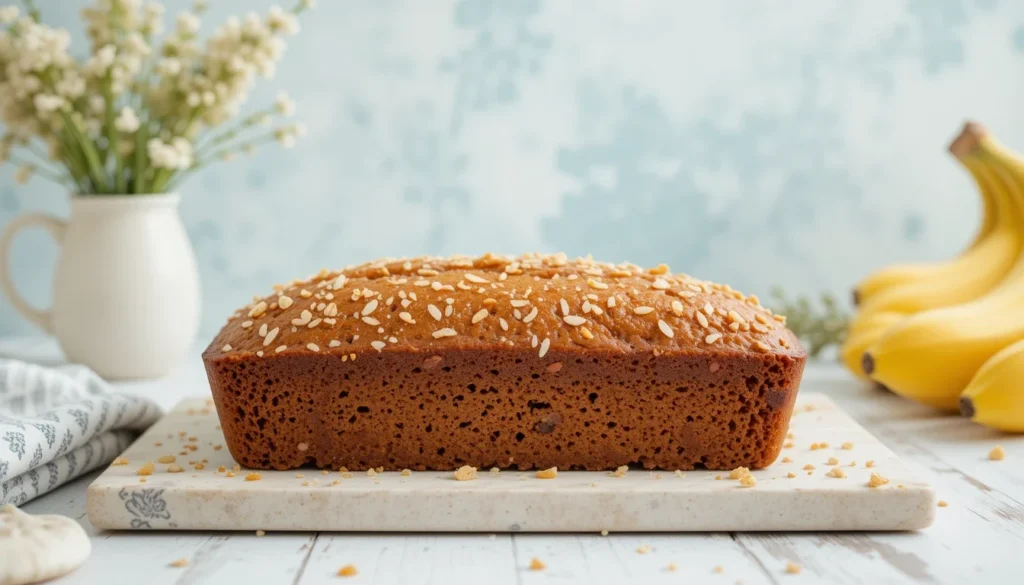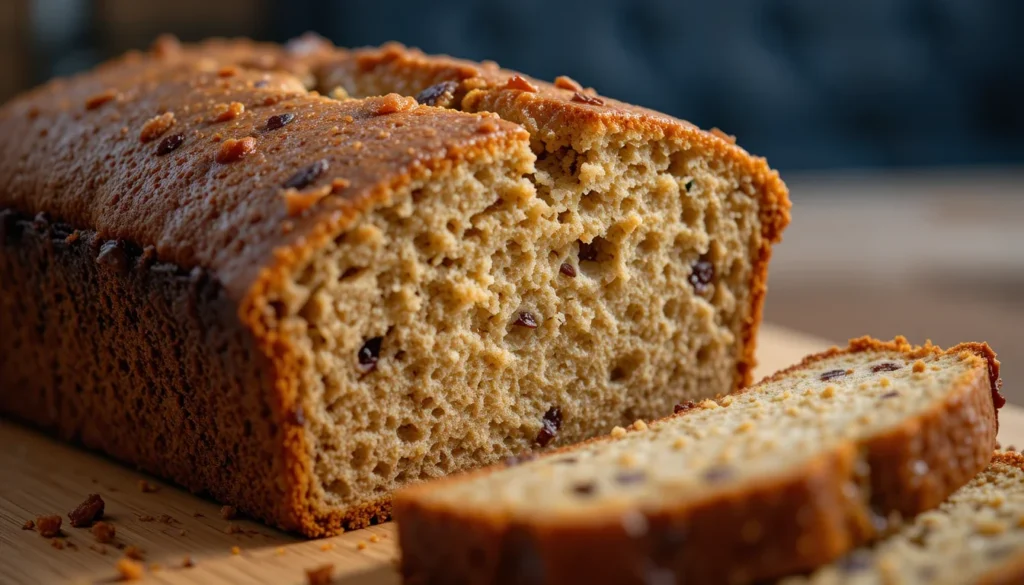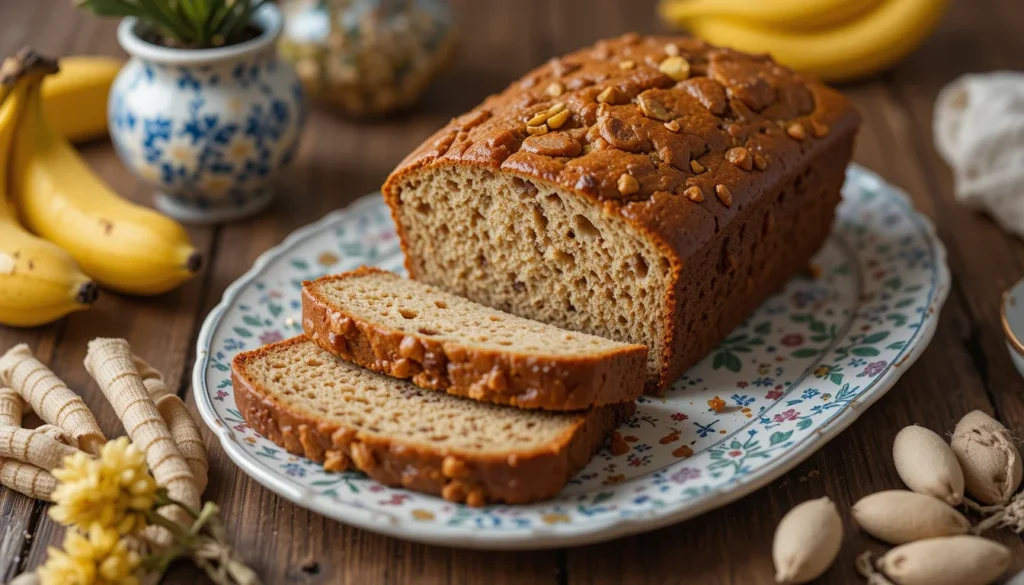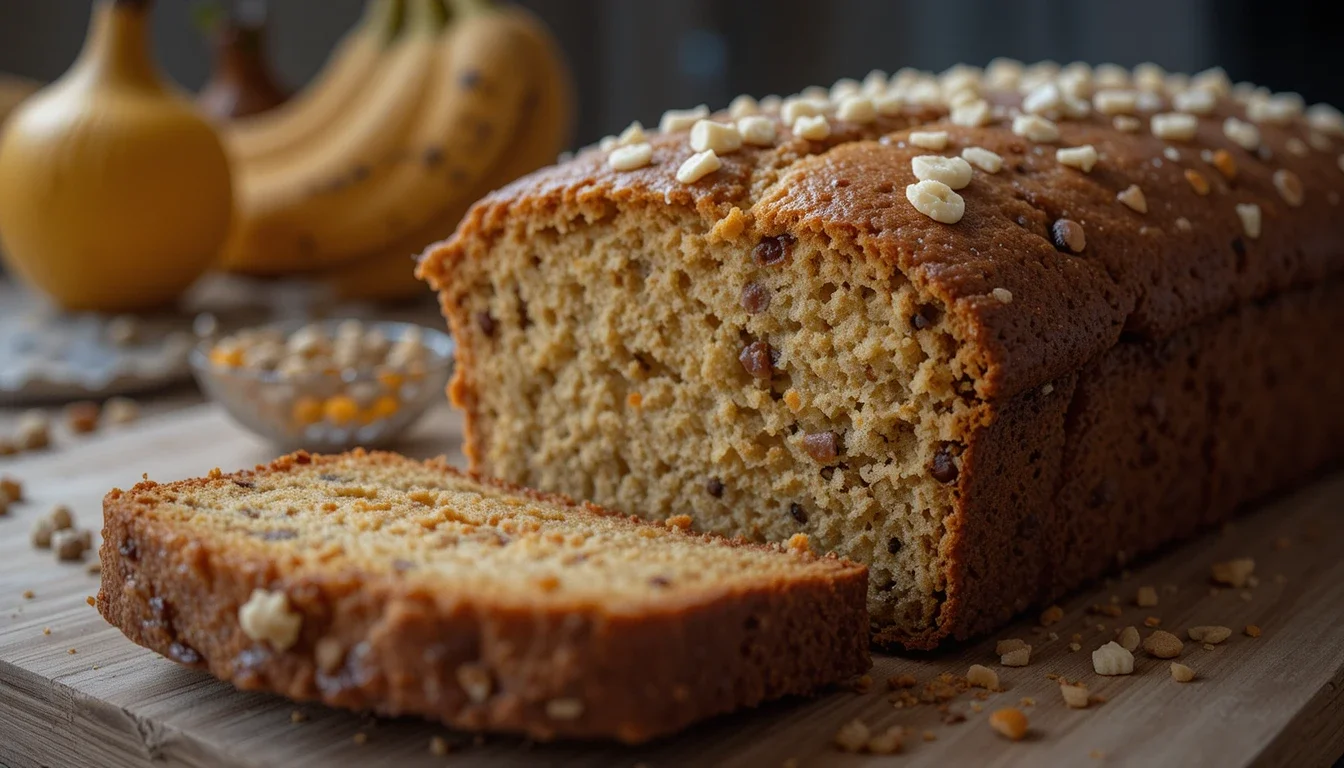Table of Contents
Introduction to Banana Bread
Few baked goods bring as much warmth and nostalgia as a freshly baked loaf of banana bread. Whether you’re looking for a way to use up overripe bananas or you simply love the taste of this classic quick bread, mastering the art of making moist, flavorful, and perfectly textured banana bread is a skill every home baker should have.
But have you ever wondered why banana bread turns out differently every time? The balance of wet and dry ingredients, mixing method, and baking time all play crucial roles in getting that perfect texture—moist but not soggy, light yet rich, and packed with banana flavor. Understanding the science of baking banana bread is key to making a consistently great loaf, and King Arthur Baking offers an in-depth look at how different ingredients affect the final result.
Another common concern is how to properly store and freeze banana bread to keep it fresh for longer. Many people don’t realize that incorrect storage can cause banana bread to dry out or become too dense. If you’ve ever struggled with keeping it fresh, check out Serious Eats for expert storage tips.
In this comprehensive guide, we’ll cover everything you need to know about banana bread—from choosing the best bananas to troubleshooting baking mistakes and even exploring fun recipe variations.
The Origins of Banana Bread
Banana bread has a rich and fascinating history that dates back to the Great Depression in the 1930s, a time when households had to be resourceful with their ingredients. With money and food in short supply, people looked for ways to reduce waste and extend the usability of perishable items—overripe bananas being a perfect example. Rather than discarding them, home bakers found that these mushy bananas could be incorporated into baking recipes, adding natural sweetness and moisture to quick breads.
During the same period, baking soda and baking powder became more commercially available and affordable, eliminating the need for traditional yeast-based bread-making. This shift led to the rise of quick breads, which required no proofing time and could be prepared quickly and easily. The combination of these new leavening agents and the increasing popularity of home baking contributed to the emergence of what we now recognize as banana bread.
One of the earliest printed banana bread recipes appeared in the 1933 edition of the Pillsbury Balanced Recipes cookbook, solidifying its place in American kitchens. However, it wasn’t until the 1950s and 1960s, with the rise of modern baking culture and electric ovens, that banana bread truly became a household staple.
Over time, banana bread evolved from a simple, practical recipe to a highly customizable treat. Traditional banana bread recipes typically contained basic ingredients like flour, sugar, eggs, and butter, but as baking trends expanded, new flavor combinations and dietary adaptations emerged. Some of the most popular variations include:

- Banana Nut Bread – A crunchy, nutty version featuring walnuts or pecans for added texture.
- Chocolate Chip Banana Bread – A sweeter variation with semi-sweet or dark chocolate chips.
- Vegan Banana Bread – A plant-based alternative using flax eggs, coconut oil, or almond milk.
- Gluten-Free Banana Bread – Made with almond flour, oat flour, or gluten-free blends.
- Healthy Banana Bread – A lighter version that swaps out refined sugar and butter for honey, Greek yogurt, or applesauce.
Today, banana bread is one of the most beloved baked goods worldwide, with recipes passed down through generations. Whether enjoyed as a warm breakfast, a comforting afternoon snack, or a decadent dessert, its moist texture, rich banana flavor, and nostalgic appeal make it a timeless favorite. From home kitchens to trendy cafes, banana bread continues to evolve, embracing new flavors, ingredients, and dietary preferences while staying true to its humble origins.
Why People Love Banana Bread
Banana bread remains one of the most beloved baked goods for several reasons:
- It’s an easy and foolproof recipe – Even beginners can bake a perfect loaf.
- Great for using overripe bananas – No waste! The riper the bananas, the better.
- Minimal ingredients – You probably have everything in your kitchen already.
- Super moist and flavorful – Thanks to the natural sweetness of bananas.
- Highly customizable – You can add nuts, chocolate chips, cinnamon, or even swap ingredients for healthier options.
- Freezes well – Make extra loaves and freeze them for later.
The Perfect Banana Bread Recipe
Essential Ingredients & Their Role
To bake the perfect banana bread, you’ll need the following:
- 3-4 overripe bananas (essential for sweetness and moisture)
- 1 ¾ cups all-purpose flour (provides structure)
- 1 teaspoon baking soda (helps the bread rise)
- ½ teaspoon salt (enhances flavor balance)
- ½ cup butter or oil (adds richness and keeps it moist)
- ¾ cup brown sugar (brings depth and caramel-like sweetness)
- 2 eggs (binds everything together)
- 1 teaspoon vanilla extract (enhances overall flavor)
- ½ teaspoon cinnamon (optional, but adds warmth)
Optional Add-ins:
- ½ cup walnuts or pecans (adds a crunchy texture)
- ½ cup chocolate chips (for extra indulgence)
Step-by-Step Instructions

- Preheat oven to 350°F (175°C) and grease a 9×5-inch loaf pan.
- Mash the bananas until smooth.
- In a separate bowl, whisk together flour, baking soda, and salt.
- Cream butter and sugar until light and fluffy.
- Add eggs one at a time, followed by mashed bananas and vanilla.
- Slowly mix the dry ingredients into the wet mixture.
- Fold in any optional add-ins.
- Pour the batter into the prepared loaf pan.
- Bake for 55-65 minutes until a toothpick inserted comes out clean.
- Cool before slicing.
How to Store & Freeze Banana Bread
To keep banana bread fresh, follow these storage methods:
- Room temperature: Wrap in plastic wrap or store in an airtight container for up to 4 days.
- Refrigeration: Stays fresh for up to a week.
- Freezing: Wrap in plastic wrap and store in a freezer bag for 2-3 months.
- Thawing: Leave at room temperature or microwave for 15-20 seconds.
For more detailed storage tips, Serious Eats has an excellent guide.
FAQs – People Also Ask About Banana Bread
1. Why is my banana bread too dense?
A common mistake is overmixing the batter, which develops too much gluten and results in a dense, chewy texture. To keep banana bread light and fluffy, mix the dry and wet ingredients just until combined—a few lumps are okay!
2. How do I make banana bread more moist?
To achieve a super moist banana bread, use very ripe bananas, brown sugar instead of white, and butter or oil for added richness. Also, avoid overbaking, as too much time in the oven can dry out the loaf.
3. Can I use frozen bananas for banana bread?
Yes! Frozen bananas work great, but make sure to thaw and drain excess liquid before using them. This prevents the batter from becoming too wet and ensures proper baking.
4. What’s the best way to ripen bananas quickly?
If you need ripe bananas fast, try these methods:
- Place them in a paper bag with an apple for 24 hours.
- Bake unpeeled bananas at 300°F (150°C) for 15 minutes to soften them.
- Microwave bananas in 30-second bursts until soft.
5. Why does my banana bread crack on top?
A cracked top is actually a good sign! It means the bread is rising properly in the oven. If the top browns too quickly, tent the loaf with foil halfway through baking.
6. Can I make banana bread without eggs?
Yes! Replace eggs with:
- Flax eggs (1 tbsp ground flaxseed + 3 tbsp water per egg)
- Mashed bananas (¼ cup per egg)
- Applesauce (¼ cup per egg)
- Yogurt or buttermilk for extra moisture
7. Can I turn banana bread batter into muffins?
Absolutely! Divide the batter into a muffin tin and bake at 350°F (175°C) for 20-25 minutes until golden brown. Muffins are a great grab-and-go option!
8. What’s the best way to store banana bread?
- At room temperature: Wrap tightly and store for up to 4 days.
- In the fridge: Keeps fresh for up to a week.
- In the freezer: Slice and freeze for up to 3 months—just thaw and enjoy!
9. Can I add mix-ins like nuts and chocolate chips?
Yes! Chopped walnuts, pecans, almonds, chocolate chips, or dried fruits can add extra flavor and texture. Just be sure to coat mix-ins with a bit of flour before adding to prevent them from sinking.
10. Why is my banana bread gummy in the middle?
If the center of your banana bread is undercooked or gummy, it may be due to:
Using too small of a loaf pan, which prevents even baking.
Too much banana puree, making the batter too wet.
Underbaking—always check doneness by inserting a toothpick into the center.

Final Thoughts
Banana bread is a timeless, delicious, and versatile baked good. Whether you enjoy the classic version or prefer experimenting with new flavors, this guide ensures a perfect loaf every time.
From selecting the ripest bananas to mastering baking techniques and storing banana bread properly, these expert tips will elevate your baking skills. If you’re looking for a healthier breakfast option, consider pairing your banana bread with a nutritious side, like this banana oatmeal recipe for a fiber-rich and energizing meal.
For those who love quick and easy desserts, why not explore similar simple yet satisfying recipes? If you enjoyed making banana bread, you might also love this fruity and creamy no-bake strawberry crunch cheesecake, which requires no oven time yet delivers incredible flavor.
And if you’re interested in baking other delicious breakfast treats, try these bran muffins—a wholesome and fiber-packed alternative that complements banana bread perfectly.
For more insights into the nutritional benefits of bananas and how they contribute to a healthy diet, check out Healthline.
No matter how you enjoy it, banana bread is a versatile, comforting, and crowd-pleasing favorite that never goes out of style.
Happy baking!


5 thoughts on “How to Make the Best Banana Bread – Moist, Easy & Delicious Recipe”